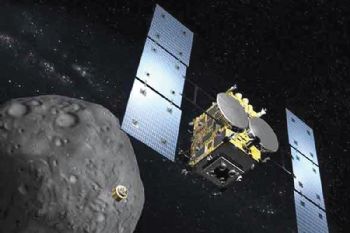
The Japanese space agency has set the dates for its plan to explore the surface of an asteroid with robots, according to a report by BBC News.
The Hayabusa-2 spacecraft reached the asteroid Ryugu in June this year after a journey of more than three years, and now the agency is preparing to despatch a number of robotic landing craft from the ‘mothership'.
If all goes well, Hayabusa-2 will be the first spacecraft to successfully deploy landers to gather data from the surface of an asteroid.
The 1km-wide Ryugu is said to be a particularly primitive type of asteroid, and studying it could shed light on the origin of our planet.
Hayabusa-2 was launched on 3 December 2014. On 21 September, it will despatch a 3.3kg container called Minerva II-1; this will release two robots that will hop across the surface and are equipped with wide-angle and stereo cameras.
On 3 October, the mothership will despatch a lander called Mascot, which has been developed by the German Aerospace Center (DLR) in conjunction with the French Space Agency (CNES).
This 10kg instrument package will gather a range of scientific data from the surface.
After it reaches the surface, Mascot can move only once — again by jumping.
The Japanese space agency said: “The surface of Ryugu is covered with boulders. We need to continue gathering information, so that we can touch down safely.”
The biggest boulder is estimated to be about 130m high.
Another lander — known as Minerva II-2 and built by a team at Japan’s Tohoku University — will be despatched at a later date.
Even further on in the mission, the Japanese Aerospace Exploration Agency plans to detonate an explosive charge that will create a crater in the surface of Ryugu.
Hayabusa-2 will then descend into the crater to collect material that has not been altered by aeons of exposure to the environment of space.
It is planned that the spacecraft will leave Ryugu in December 2019 and return to Earth with its asteroid samples in 2020.